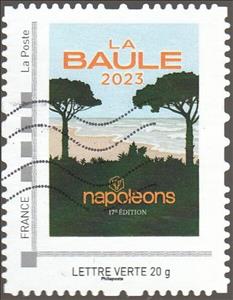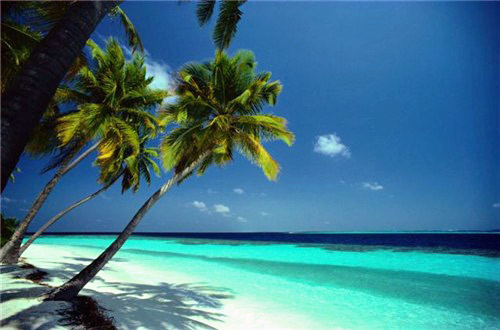Stamp: La Baule 2023 Napoleons 17e Edition (France 2023)
La Baule 2023 Napoleons 17e Edition (France 2023)
01 January (France ) within release Collectors : Montimbramoi. Miscellaneous goes into circulation Stamp La Baule 2023 Napoleons 17e Edition face value Lettre No Face Value
| Stamp La Baule 2023 Napoleons 17e Edition in catalogues | |
|---|---|
| Colnect codes: | Col: FR-MON 2023-50 |
Stamp is square format.
Innovators CoferenceAlso in the issue Collectors : Montimbramoi. Miscellaneous:
- Stamp - Zahiri Informatique TV Video face value Prioritaire;
- Stamp - 1835 White Palm Hotel Cannes face value Prioritaire;
- Stamp - CAN Travaux Speciaux face value Prioritaire;
- Stamp - Deshaie Botanical Garden. Orchid face value Prioritaire;
- Stamp - DoDo face value Prioritaire;
- Stamp - Fairground Ride face value Lettre;
- Stamp - Leonor Greyl face value Lettre;
- Stamp - Studio de la Cuisine face value Lettre;
- Stamp - Club Cyclo Lanester 50 years face value Lettre;
- Stamp - Helene Boucher (1908-1934) face value Lettre;
- Stamp - L'Apostrophe 10 Mediatheque, Chartres face value Lettre;
- Stamp - Church. Eglise Saint Remy Auneau XII face value Prioritaire;
- Stamp - Phila Sud-Ouest 2023 Perigeux. Metaguerre Tower face value Lettre;
- Stamp - Chapelle Saint Martin de Vaudreuille face value Lettre;
- Stamp - House face value Lettre;
- Stamp - La Lorientaise. Toutes active contre le cancer du sein face value Lettre;
- Stamp - Oeuilly face value Lettre;
- Stamp - Painting of Townhouse face value Lettre;
- Stamp - Pmo Sustaining face value Lettre;
- Stamp - Wattrelos. Three Giant Statues face value Lettre;
- Stamp - 109 Club face value Lettre;
- Stamp - Emrys face value Lettre;
- Stamp - L'arbre de mai. May pole face value Lettre;
- Stamp - L'arbre de mai. May pole face value Lettre;
- Stamp - Porche du Plessis 35520 face value Lettre;
- Stamp - Stream. Courant d'Huchet face value Lettre;
- Stamp - Blue flower Round design face value Lettre;
- Stamp - Chantenay 1886 Monument Historique face value Lettre;
- Stamp - Procadres International face value Lettre;
- Stamp - Quimper Volley 29 Elite face value Lettre;
- Stamp - Val d'Yerres Immo face value Lettre;
- Stamp - Zorgh'eau, L'eau pour tous face value Lettre;
- Stamp - BEA Architecture Maitrise d'Oeuvre face value Lettre;
- Stamp - Bimedia face value Prioritaire;
- Stamp - Fontaine Monumentale Evreux face value Lettre;
- Stamp - Francois-Joseph Fournier face value Lettre;
- Stamp - Takamaka Sports Nature face value Lettre;
- Stamp - Association Le Liseron Besancon face value Lettre;
- Stamp - Musee de la Resistance. Portrait of Madame Socie face value Lettre;
- Stamp - Rocher de Valmy, Avane Aveney face value Lettre;
- Stamp - La Baule 2023 Napoleons 17e Edition face value Lettre;
- Stamp - Marché Du Timbre - site d'échange philatélique face value Prioritaire;
- Stamp - 25th Boutique du Menuisier face value Lettre;
- Stamp - Picasso style painting of a face face value Lettre;
Stamp La Baule 2023 Napoleons 17e Edition it reflects the thematic directions:
A beach is a landform alongside a body of water which consists of loose particles. The particles composing a beach are typically made from rock, such as sand, gravel, shingle, pebbles, etc., or biological sources, such as mollusc shells or coralline algae. Sediments settle in different densities and structures, depending on the local wave action and weather, creating different textures, colors and gradients or layers of material.
Coastal areas are local administrative units (LAUs) that are bordering or close to a coastline. A coastline is defined as the line where land and water surfaces meet (border each other).
A conference is a meeting, often lasting a few days, which is organized on a particular subject, or to bring together people who have a common interest. Conferences can be used as a form of group decision-making, although discussion, not always decisions, is the primary purpose of conferences. The term derives from the word confer.
In botany, a tree is a perennial plant with an elongated stem, or trunk, supporting branches and leaves in most species. In some usages, the definition of a tree may be narrower, including only woody plants with secondary growth, plants that are usable as lumber or plants above a specified height. Trees are not a taxonomic group but include a variety of plant species that have independently evolved a woody trunk and branches as a way to tower above other plants to compete for sunlight. In looser senses, the taller palms, the tree ferns, bananas and bamboos are also trees. Trees tend to be long-lived, some reaching several thousand years old. The tallest known tree, a coast redwood named Hyperion, stands 115.6 m (379 ft) high. Trees have been in existence for 370 million years. It is estimated that there are just over 3 trillion mature trees in the world. A tree typically has many secondary branches supported clear of the ground by the trunk. This trunk typically contains woody tissue for strength, and vascular tissue to carry materials from one part of the tree to another. For most trees it is surrounded by a layer of bark which serves as a protective barrier. Below the ground, the roots branch and spread out widely; they serve to anchor the tree and extract moisture and nutrients from the soil. Above ground, the branches divide into smaller branches and shoots. The shoots typically bear leaves, which capture light energy and convert it into sugars by photosynthesis, providing the food for the tree's growth and development. Flowers and fruit may also be present, but some trees, such as conifers, instead have pollen cones and seed cones; others, such as tree ferns, produce spores instead. Trees play a significant role in reducing erosion and moderating the climate. They remove carbon dioxide from the atmosphere and store large quantities of carbon in their tissues. Trees and forests provide a habitat for many species of animals and plants. Tropical rainforests are one of the most biodiverse habitats in the world. Trees provide shade and shelter, timber for construction, fuel for cooking and heating, and fruit for food as well as having many other uses. In parts of the world, forests are shrinking as trees are cleared to increase the amount of land available for agriculture. Because of their longevity and usefulness, trees have always been revered, with sacred groves in various cultures, and they play a role in many of the world's mythologies.




